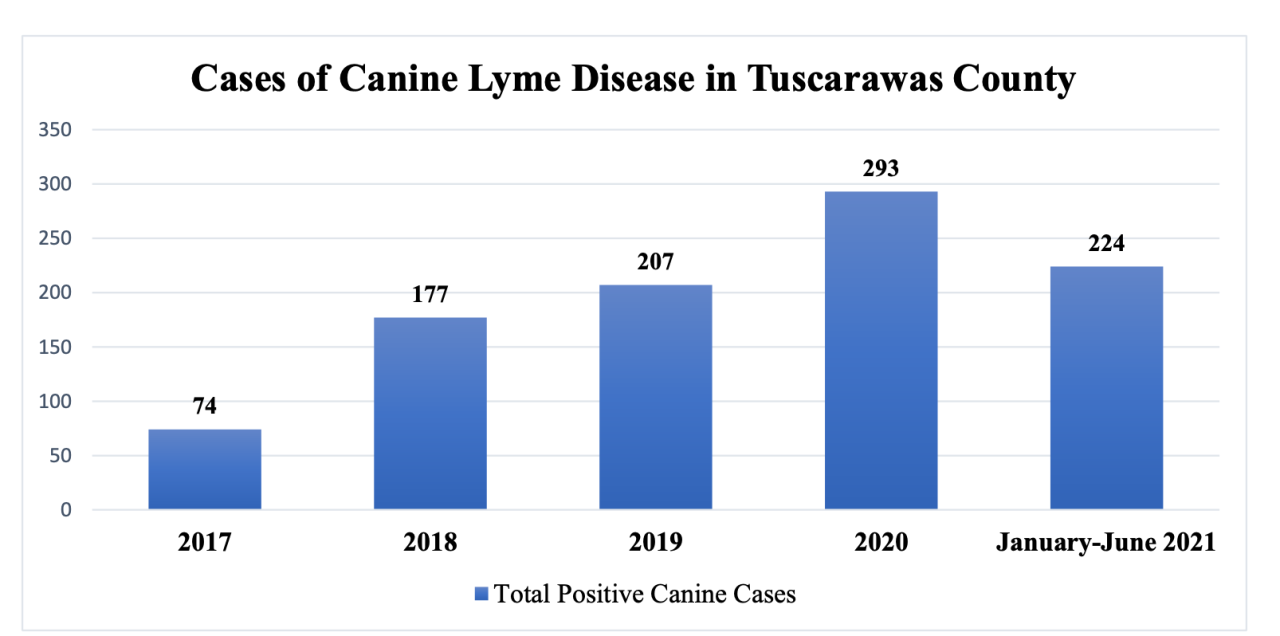DOVER, Ohio — With summer in full swing, health leaders told News 5 Lyme disease is on the rise.
In Tuscarawas County, experts say they’re handling a higher-than-normal number of suspected cases thanks to more ticks out in the wild. They've reported 29 cases so far in 2021, which is almost double their total number of cases from 2018.
Katie Seward serves as the county’s health commissioner; she’s seeing an alarming rise in cases among dogs and people.

“We have seen an increase in the past three years of cases that are continuously climbing,” she said. “I believe the cases we’re seeing reported are really the tip of the iceberg. We have over 200 cases in dogs so far from January to June of this year and we know by looking at those numbers, that tells us a little bit about the prevalence of the ticks out there carrying the disease, and then of course how humans will develop it as well.”
A quick glance at the Ohio Department of Health website shows that reports of Lyme disease used to be an uncommon occurrence in Ohio, but have since grown substantially over the past several years.
Data from the Ohio Department of Health shows a steady climb in the number of confirmed cases of Lyme disease from about 40 in 2010 to more than 400 in 2019.
Lyme disease is transmitted to humans through bites from black-legged ticks, also known as deer ticks, which carry the disease.
“We’re also hearing, for whatever reason, they’re becoming heartier and they aren’t dying off in the winter as they previously have, so the population of black-legged ticks carrying the disease are more prevalent," Seward added.
In addition to a "bull’s eye rash," other symptoms doctors say those infected with Lyme disease can encounter include headache, fever, chills, muscle and joint pain, and feeling tired.

While many spent the past year trying to protect against the coronavirus, Seward is urging everyone to take a second look whenever they’re stepping in from the outside.
"Make sure you’re wearing longer clothing, if you know you’re going to be out in the woods," she said. "Checking yourself throughout if you’re coming in outside, and also using a product that has 20-30% DEET."




